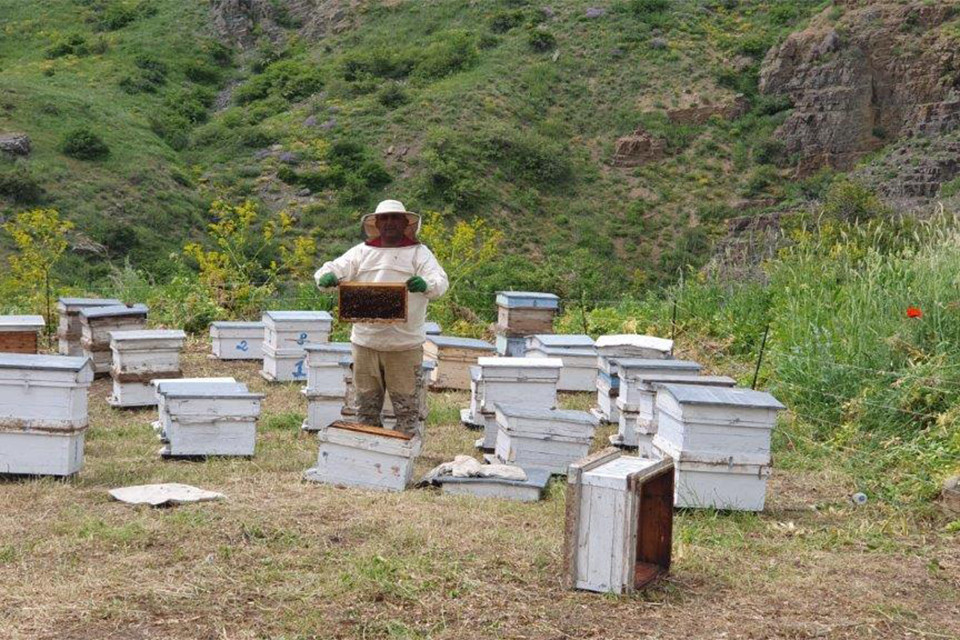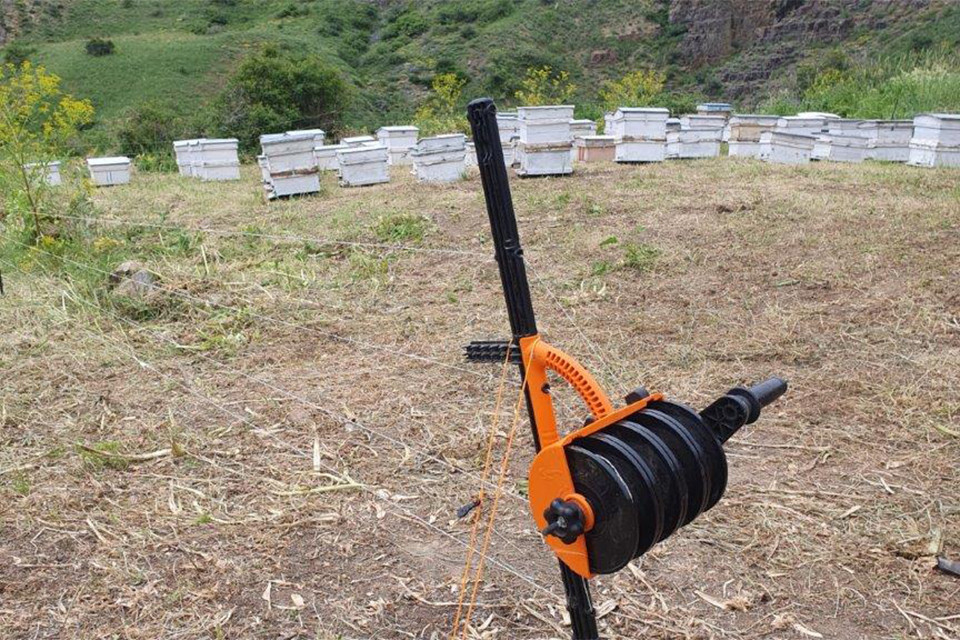Years ago, Viva-MTS and the Foundation for the Preservation of Wildlife and Cultural Assets (FPWC) found the best way to mitigate the human-wildlife conflict.
“Electric Fences”, which operate with the use of modern technologies have been added to the daily care of nature. For more than 17 years, partners who have been carrying out important and serious environmental projects in different regions of Armenia, in 2020, implemented the first project of embedding “electric fences” in Vayots Dzor.
Farms that have used the solar-powered fence service were not attacked by bears in subsequent years. They managed to harvest without harming the animal.
In Vayots Dzor region this year, new farmers began to benefit from the support of Viva-MTS and the Foundation for the Preservation of Wildlife and Cultural Assets (FPWC). Dozens of beehives have been entrusted to the “care” of “electric fences.” “Electric fences” are especially suitable for beekeepers who are constantly on the move throughout the year and farmers travelling to far-flung pastures.
Donated systems have an advantage: they are easily transported, provide local work, allow to enclose the required territory within 10-15 minutes and are dismantled in a short period of time. With the systems provided in 2020, the farmers can enclose 7,500 square meters, and with this year’s systems - 1 hectare (ha) of area.
An electric fence operates at high voltage but low current (amperage). As a result, the animals are not physically harmed, but, feeling unpleasant, they no longer approach the fenced areas. The system consists of a solar panel, a micro-inverter, a battery, an electronic fence generator, and an easy-to-mount and dismantle fence. The system provided four years ago has the possibility of fencing 300 linear meters, and this year - 400 linear meters.

17:29 | 24.09.25 | Articles
Jacopo Losso on Cross-Border Investments and Why Armenia Attracts Angels










